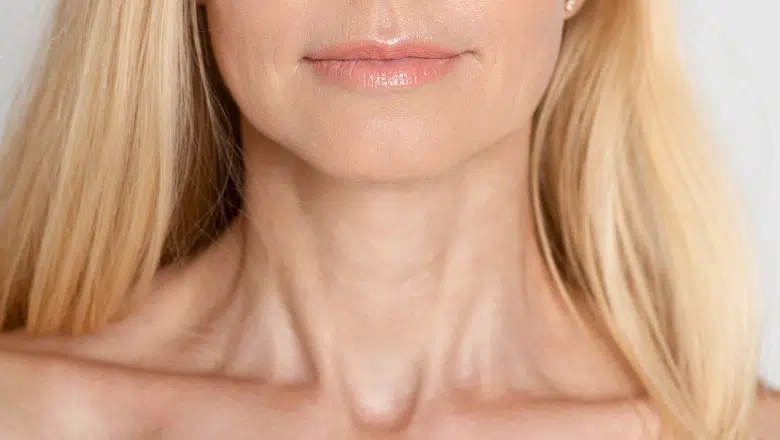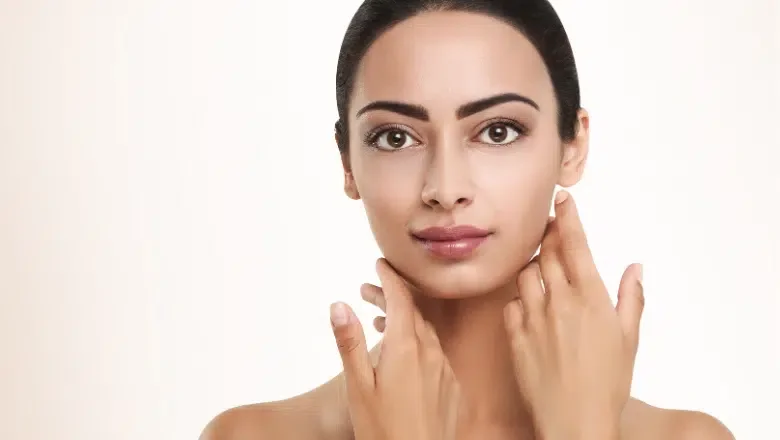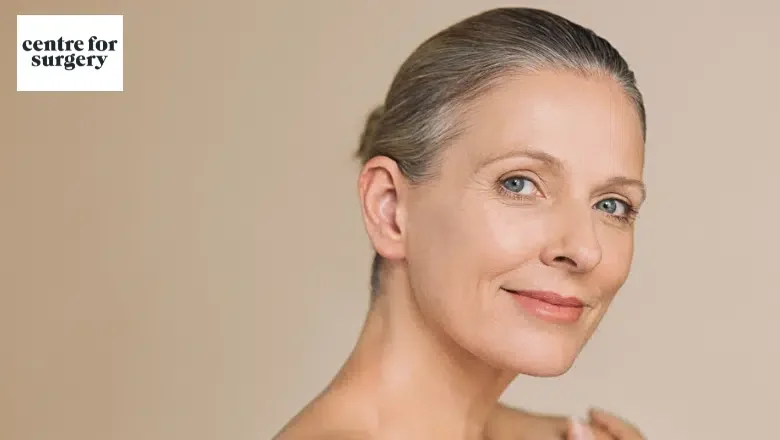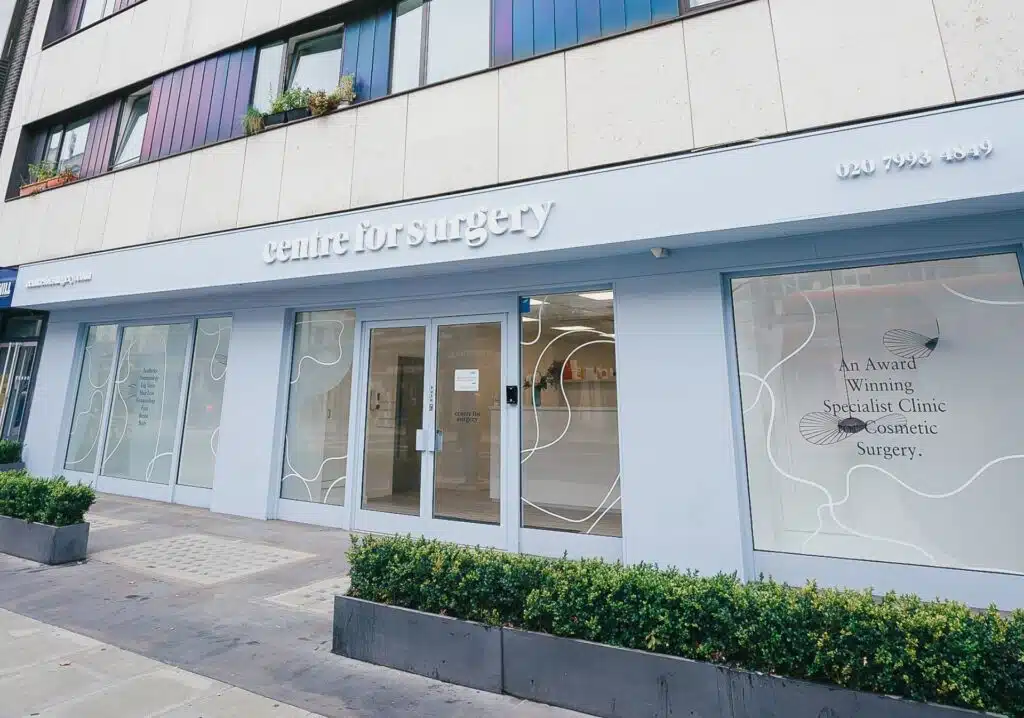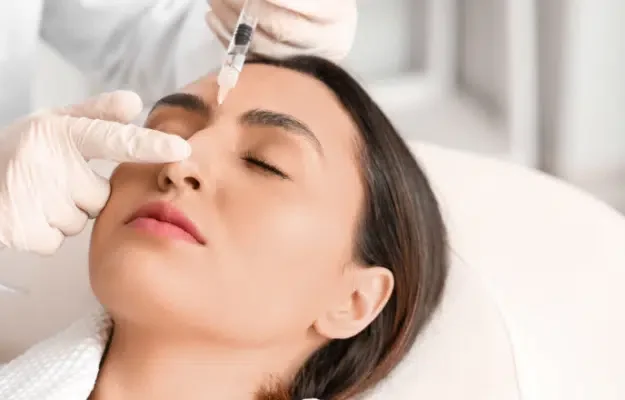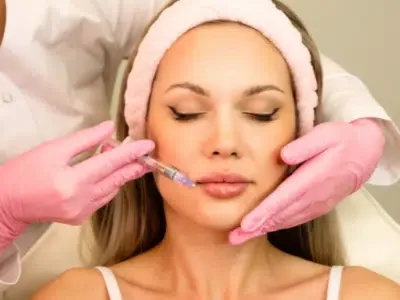Neck Lines & Wrinkles: Possible Causes & How to Get Rid of Them
Neck lines, sometimes called neck wrinkles or creases, are just visible marks on your neck. They show up as we get older. The skin on our neck is quite thin and gentle, more so than the skin on our face. This means it’s more likely to show signs of getting older, like tiny lines and folds. It can also lose its stretchiness, which can make the neck look droopy.
RELATED: Solutions For Saggy Neck – Neck Liposuction vs Neck Lift
For lots of people, having a young-looking, smooth neck is really important. This is because the neck is an area that people often notice. If you’re worried about your neck looking older, you might be thinking about having a neck lift. This is a type of surgery where any extra skin, fat and loose muscle in the neck area are removed. The aim of this operation is to tighten up the neck and give it a better shape, which can help to make the lines on the neck and any drooping skin less noticeable.
But it’s really important to speak to a trained plastic surgeon at Centre for Surgery in London. We can help you decide if a neck lift is the right thing for you. Plus, depending on how severe your neck lines are, you might want to think about non-surgical options too.
RELATED: Neck Lift Surgery vs Non-Surgical Neck Rejuvenation – Which Should I Choose?
What are Neck Lines?
Neck lines are noticeable folds and wrinkles that you can see on your neck. They can be different for everyone, with some people having thin, barely visible lines and others having more obvious, deeper creases.
Everyone gets these neck lines as they get older. This is because your skin changes as you age, and it starts to lose two important substances: collagen and elastin. These make your skin elastic and firm.
When your skin doesn’t produce as much collagen and elastin as it used to, plus the impact of things from outside your body, neck lines start to form. The skin on your neck is especially likely to be affected by these changes. This is because it’s always being exposed to things in the environment that can damage it, like sunlight.
It’s really important to understand why neck lines happen. Once you know what causes them, you can figure out the best ways to deal with them and even stop them from forming in the first place.
What Causes Neck Lines?
There are a number of key things that cause neck lines. The main ones are getting older, damage from the sun, your genes and certain lifestyle choices. Let’s talk about each of these.
Lifestyle choices – The things you do in your daily life can have a big impact on whether or not you get neck lines.
- Smoking – Smoking is really bad for your skin, and can make it get older faster than it would if you were just out in the sun. The chemicals in cigarettes harm collagen and elastin, which makes your skin sag and wrinkles appear.
- Repetitive Neck Movements – The skin on your neck is quite thin and gentle. If you move your neck a lot in the same way, this can cause neck lines. Things like the way you hold your neck, looking down at your phone or computer all the time, the way you sleep and moving your neck a lot when you do physical activities at work can all put stress on your skin and cause creases.
Genes – Your genes play a big part in how your skin gets older and whether you’re likely to get neck lines. They can affect how your skin reacts to things like sunlight and pollution, as well as how well it can repair itself.
Getting Older – When we get older, our bodies make less collagen and elastin. These are proteins that keep our skin firm and stretchy. If we don’t have as much of these proteins, our skin won’t be as smooth and stretchy as it once was. If lots of people in your family have neck lines or other signs of getting older on their neck, you might be more likely to get them too. This means that you might start to get neck lines when you’re younger, or they might be more obvious. But remember, your genes are just one of many things that affect how quickly you get older. You can’t change your genes, but knowing what your family history is can help you take steps to look after your skin better. You might use a good skincare routine, protect your skin from the sun, live a healthy lifestyle, or even think about getting cosmetic treatments.
On top of that, the structures in our skin that support it, like fibrous and connective tissues, start to break down. When these get weaker, the skin can’t fight against gravity as well, which makes it sag and wrinkles appear.
Sun Damage – Damage from the sun is a major cause of getting older, including getting neck lines. When our skin is exposed to the sun for a long time without protection, the sun’s ultraviolet (UV) rays can harm our skin. This is especially true for the neck, which is often in the sun. UV rays get into the skin and break down the collagen and elastin fibres.
How Can You Prevent Neck Lines?
Neck lines can look different on everyone, and it’s important to know the various types of neck lines so you can find the best way to treat them. Here, we’ll look at three common types of neck lines.
Horizontal Neck Lines
These lines, often called necklace lines or neck wrinkles, go across your neck from side to side and can get more obvious as you get older.
They happen because of a few different things:
You naturally lose collagen and elastin as you age You move your neck a lot in the same way Damage from the sun There are quite a few non-surgical treatments that can help with horizontal neck lines:
- Creams and serums that you put on your skin
- Skin boosters
- Injections to get rid of wrinkles
- Fotona4D treatment
- Morpheus8 treatment
In some situations, you might be advised to have surgery to tighten the skin on your neck. This gets rid of any extra skin and makes the muscles underneath tighter.
Vertical Neck Bands
These are long lines or bands that go up and down your neck from the bottom to your chin. They’re also known as platysmal bands. They happen when the muscles in your neck, called the platysma muscles, get weaker and separate.
Injections that get rid of wrinkles can be used to treat platysmal bands. These injections relax the muscles and make the bands look less obvious. As a result, vertical neck lines aren’t as visible.
Crepey Skin Neck Lines
Crepey skin is thin, wrinkled skin that looks like the texture of crepe paper. It often affects the neck area, where the skin is naturally thinner and more likely to show signs of getting older.
There are non-surgical options to treat crepey skin, such as creams that contain retinol and chemical skin peels. These treatments get rid of the outer layer of dead skin cells, which encourages new, healthier skin to grow.
If you have more serious crepey skin, you might be advised to have cosmetic treatments like Fotona4D and Morpheus8. These treatments aim to improve the look of crepey skin by tightening the skin in the affected area to make it smoother. The most effective way of tightening loose neck skin is to have a neck lift operation.
Neck Procedures to Tighten Loose Neck Skin
Neck Lift
A lot of people want to know how to get rid of neck lines and how to make the skin on their neck tighter. In some situations, a type of plastic surgery called a neck lift is used to tighten the platysma muscles in the neck and get rid of any extra fat in the neck. This treatment to make the neck tighter involves making cuts behind the ears and under the chin. The skin on the neck is then lifted up and put back in a different position.
RELATED: Neck Lift FAQs – Q&A about Neck Lift Surgery
Having a neck lift can make sagging skin and wrinkles less obvious. This makes the skin on the neck tighter, which can make your neck look smoother and more shaped.
After having this surgery, you might find that your neck is swollen, bruised, and a bit uncomfortable. You might also need to wear a special type of clothing called a compression garment. You’ll need to take some time off to rest and you should be able to go back to your normal activities in a few weeks.
RELATED: Neck Lift Options – Types Of Neck Lift Surgery
Neck Liposuction
Neck liposuction is a surgical treatment that can be used to tackle loose skin on the neck. This operation gets rid of any extra fat in the neck area.
During the operation, the surgeon makes small cuts and uses a thin tube, known as a cannula, to suck out the extra fat. This procedure is quite simple and is done under general anaesthetic, which means you’ll be asleep and won’t feel any pain. The recovery period after the operation is usually quite short.
After having neck liposuction, you might notice a few benefits:
- The profile of your neck might be improved
- You might notice a reduction in the appearance of a double chin or a neck that looks fatty
- Your jawline might look more defined
Platysmal Bands Treatment
The process of treating platysmal bands involves using anti-wrinkle injections injected strategically into the neck. These injections are specifically designed to relax the muscles in the neck, reducing the tightness that can cause visible bands, or lines, to appear on the neck.
The treatment is non-invasive, meaning no surgery is involved, and it is relatively quick, with the whole procedure typically taking around 15 minutes. The injections are given with a very fine needle, so most people experience little to no discomfort during the process.
After the injections have been administered, you can return to your daily activities almost immediately. This minimal downtime is one of the advantages of this treatment. However, it’s recommended to avoid strenuous exercise or heavy lifting for a few days to allow the injections to settle properly into the muscles.
Within about two weeks after treatment, you should begin to see noticeable improvements in the appearance of your neck. The vertical lines, or bands, caused by the platysmal muscles will have reduced in visibility due to the relaxing effect of the injections.
It’s important to note that the results of anti-wrinkle injections are not permanent. The effects typically last several months, but this can vary from person to person.
Neck Lift Surgery Aftercare Instructions
Proper aftercare and maintenance are vital no matter if you’ve had surgical or non-surgical treatment, as it helps to make sure you get the best results possible and that your recovery goes smoothly. Depending on the type of procedure and your own personal situation, the aftercare instructions might be a bit different.
RELATED: Recovery after Neck Lift Surgery
Here are some general rules that you can follow to help with things like swelling, bruising, and discomfort:
- Don’t touch or rub the area that’s been treated unless you’ve been told it’s okay to do so.
- Try applying a cold compress to the area that’s been treated for a few minutes at a time. This can help to bring down any swelling.
- Make sure you stay out of the sun to protect your skin.
- Drinking plenty of water and eating a balanced diet can help your body to heal.
- Make sure you go to any follow-up appointments that have been arranged so that your progress can be checked.
- Take any painkillers that have been prescribed to you to help with any discomfort you’re feeling while you’re recovering.
- Avoid doing any activities that are strenuous or involve lifting heavy items.
- Follow the instructions that your surgeon has given you about looking after your scars.
- Don’t smoke and avoid drinking alcohol as these can both slow down the healing process.
Keep in mind that everyone is different and so everyone’s healing process is different. Always follow the specific aftercare instructions that you’ve been given for the best results and a smooth recovery.
How to Maintain the results of your neck lift procedure
To ensure that the effects of your treatments last for as long as possible, it’s essential to take good care of your skin in the long term. There are several strategies you can adopt to maintain the positive effects of your treatment.
One of the most important things you can do is to keep up with a regular skincare routine. This involves cleaning your skin thoroughly and using products that nourish and protect it, especially on the neck area. Maintaining good hydration of your neck skin is another key aspect of this routine, so be sure to use a good moisturiser.
Protecting your skin from the sun is also crucial. Overexposure to the sun’s UV rays can damage the skin, leading to premature ageing and undoing the benefits of your treatment. Wear sun protection, such as a hat and sunscreen, whenever you’re outdoors for extended periods.
Alongside this daily care, it’s important to schedule regular consultations with your surgeon. They can assess how long your results are lasting and discuss any necessary tweaks or additional treatments to keep you looking your best.
Bear in mind that some treatments, like injectable fillers, are not permanent. They will need to be repeated at intervals recommended by your specialist to maintain the results you want. This is because your body naturally breaks down the injected substance over time, so regular top-ups are necessary to maintain your rejuvenated appearance.
By combining these strategies, you can ensure the longevity of your treatment results, keeping your skin looking fresh, youthful, and vibrant.
The Power of Non-Surgical Approaches in Eradicating Neck Lines
In the quest for a youthful and smooth neckline, non-invasive treatments stand out as a beacon of hope for those looking to diminish the appearance of neck lines without undergoing surgery. These treatments, ranging from anti-ageing injectables to advanced technological solutions like Morpheus 8 and radiofrequency, offer a spectrum of benefits tailored to address the specific needs of the skin in the neck area.
One of the most appealing aspects of non-surgical treatments is their convenience and minimal downtime. Unlike surgical alternatives, these procedures allow individuals to quickly return to their daily routines, often immediately after treatment. This ease of treatment makes it an attractive option for those with busy lifestyles who cannot afford the lengthy recovery times associated with surgical interventions.
The array of non-invasive treatments includes:
- Anti-Ageing Injectables: These injectables work by relaxing the muscles beneath the skin that contribute to the formation of neck creases. The procedure is swift, usually completed within half an hour, and requires no downtime, making it an ideal option for immediate aesthetic enhancement.
- Dermal Fillers: Specifically designed to combat wrinkles and lines, dermal fillers are injected directly into the neck area. These fillers, often containing hyaluronic acid—a substance naturally found in the body—provide temporary relief from neck wrinkles, with results that are visually gratifying but require periodic maintenance.
- Microneedling and Radiofrequency Treatments: Innovations like Morpheus 8 combine the collagen-stimulating benefits of microneedling with the skin-tightening effects of radiofrequency energy. This dual-action treatment not only improves skin texture and elasticity but also contours the neck area, offering results that can last for years, albeit with the understanding that the skin will continue its natural ageing process.
The effectiveness and duration of these non-surgical treatments can vary, with some results lasting up to three years, while others may need renewal after just a few months. This variance underscores the importance of a tailored treatment plan, designed to meet the individual’s skin type and cosmetic goals, ensuring that the benefits of these non-invasive approaches are maximised.
Selecting the Ideal Neck Wrinkle Solution: Aligning with Your Lifestyle and Aesthetic Ambitions
The quest for a smoother, more youthful neck is a common goal among many, driven by the desire to enhance one’s appearance and boost confidence. The good news is that the evolution of skincare technology has broadened the spectrum of available treatments, offering effective solutions to diminish neck lines and wrinkles. Whether your preference leans towards the simplicity and minimal downtime of non-invasive methods or the lasting results of surgical procedures, there is a treatment pathway tailored to meet your specific needs and aspirations.
Non-invasive treatments offer a convenient entry point for those exploring cosmetic improvements for the first time or for individuals seeking to maintain their appearance with minimal interruption to their busy lives. These treatments, including dermal fillers, anti-ageing injections, and innovative technologies like Morpheus 8, deliver noticeable results with little to no downtime. They are particularly appealing to those who prefer a non-surgical approach or who wish to avoid the recovery time associated with more invasive procedures.
On the other end of the spectrum, surgical options present a more permanent solution to neck wrinkles and sagging. Procedures such as Cervicoplasty or Platysmaplasty neck lifts not only offer significant improvements in neck contour but also provide long-lasting results. For those looking for a one-time treatment to address their concerns comprehensively, surgery might be the preferred route. Additional procedures, such as liposuction or facelifts, can further enhance the transformative effects of neck lift surgeries, creating a harmonious and rejuvenated overall appearance.
Choosing the right treatment depends on a variety of factors, including your lifestyle, recovery time availability, and long-term aesthetic goals. Non-invasive treatments can be an excellent choice for individuals seeking immediate improvements with the flexibility of short recovery times. In contrast, surgical interventions might be more suited to those seeking a permanent solution and are willing to undergo a longer recovery process for more pronounced results.
Frequently Asked Questions
When Do Neck Lines Typically Begin to Appear?
Neck lines can start to make their presence known as early as your 20s and 30s, marking the initial signs of the skin’s ageing process. However, it’s during the mid-30s to 40s that these lines tend to become more noticeable and pronounced. This variation in onset is influenced by several factors, including genetic predisposition, skin type, and lifestyle choices, making the ageing journey unique for each individual.
What Are the Primary Causes of Neck Lines?
The formation of neck lines and wrinkles is attributed to a confluence of factors, with the natural ageing process taking the lead. As we age, our skin gradually loses collagen and elastin, two key components that provide structure and elasticity. This loss results in the skin becoming less firm and more prone to wrinkles. Lifestyle choices such as smoking can accelerate this process, as it introduces toxins that further degrade skin quality. Additionally, repetitive motions, such as frequently looking down at mobile devices or books, can contribute to the formation of creases over time. Sun damage is another significant factor; prolonged exposure to UV rays without adequate protection can hasten the breakdown of skin collagen, leading to earlier and more pronounced neck lines.
What is the connection between turkey neck and neck lines, and what are the available treatments?
Turkey neck and neck lines are often linked as they both typically surface as a result of the ageing process. The main causes behind these conditions include the skin’s natural ageing, the loss of collagen, and the pull of gravity.
The term “turkey neck” is used to describe the saggy skin and fat that hangs down from the neck, similar to a turkey’s wattle. This sagging can be due to the build-up of fat leading to droopy skin, giving the neck a “turkey neck” look. This phenomenon can also occur due to loose skin after significant weight loss.
RELATED: The Best Treatments for Turkey Neck
Neck lines, on the other hand, are visible folds and wrinkles that appear on the neck due to a combination of various factors. As skin ages, it loses collagen and elastin – the proteins that keep the skin firm and elastic. Coupled with constant neck movements and exposure to environmental stressors, these factors can lead to the formation of neck lines.
Neck lift surgery, which involves the removal of excess skin, can effectively address both turkey neck and neck lines. The procedure tightens the skin on the neck, which can significantly reduce the appearance of a turkey neck and neck lines.
How long does it take to recover from a neck lift procedure?
Typically, recovery from a neck lift surgery takes around 4 to 6 weeks, with patients often taking a week off work. During this time, some swelling and bruising may occur. It’s crucial to get plenty of rest and avoid exposure to the sun during this recovery period.
Neck Lift & Neck Liposuction at Centre for Surgery
At the Centre for Surgery, we understand how integral the neck’s appearance is to one’s overall aesthetic. That’s why we offer neck lift and neck liposuction procedures, designed to enhance your natural beauty and rejuvenate your appearance.
Our team of seasoned clinicians possess a high level of expertise and training in neck lift and neck liposuction procedures. We employ advanced surgical techniques to create personalised treatment plans that address each patient’s unique needs and goals.
A neck lift is an effective procedure to correct sagging skin and loose muscles in the neck area, often caused by ageing. Meanwhile, neck liposuction specifically targets and removes excess fat in the neck, giving it a slimmer and more youthful appearance. Both procedures aim to enhance the contour of your neck and jawline, resulting in a more defined and youthful look.
Your safety is our primary concern at our Baker Street clinic. We operate in a fully accredited clinic, strictly following the highest safety standards and protocols in every procedure we perform. We ensure you are well-informed about the procedures, including the potential risks, recovery process, and expected results.
Moreover, our commitment extends beyond the operation. Comprehensive post-operative care is an essential part of our service. Our team is always available to provide the necessary aftercare, answer any queries, and address any concerns you may have following your surgery.
Choosing the Centre for Surgery for your neck lift or neck liposuction procedure means selecting a team of professionals committed to delivering high-quality, safe treatments with your best interests in mind. We strive to ensure you have a comfortable experience and are fully satisfied with your results, helping you to look and feel your best.
